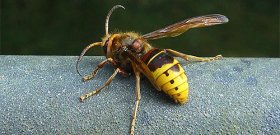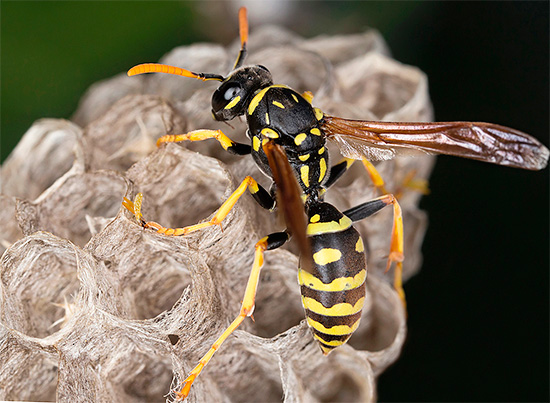
Next you will learn:
- How can you quickly and efficiently get wasps out of the house if they have made their nest here;
- Reliable ways to destroy a wasp nest, even if it is in a hard-to-reach place;
- How can you completely remove wasps from your summer cottage using traps made from ordinary plastic bottles;
- How can wasps be killed with poisoned baits, which will be carried by insects to the nest for feeding larvae;
And other interesting nuances of the fight against wasps.
Ordinary paper wasps often settle near human habitation, while creating many problems with their undesirable presence. So, for example, insects often equip their nests in attics, in sheds, under the roofs of houses, in crevices behind the lining of walls and balconies.

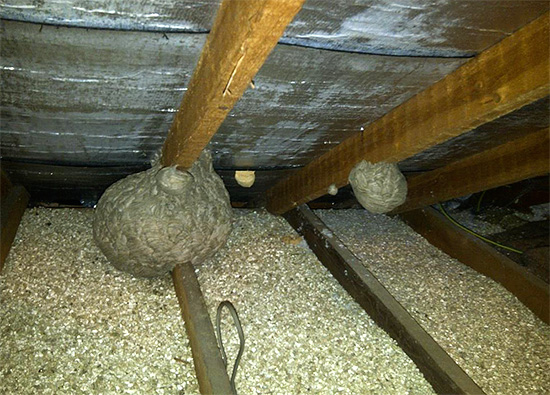
Even if there is one nest of wasps on the territory of a summer cottage, few people can feel calm, and by mid-summer there are usually so many insects that they literally fill the entire local area - so much so that it is no longer clear who is the owner on the site. Moreover, coming closer than 2-3 meters to a hornet's nest is simply dangerous to health, since insects can one day take a person for a threat and attack with the whole swarm. Now imagine a small child who, without parental supervision, decided to take a walk near the house ...
In some cases, it may be necessary to remove wasps (and hornets) from the site even when there is no nest directly on it, but insects often and in large numbers visit here and cause damage. For example, if hives with bees are placed on the site, strawberries, cherries and grapes are grown - at the same time wasps very often spoil a significant share of the berry crop, and hornets actively destroy bees.
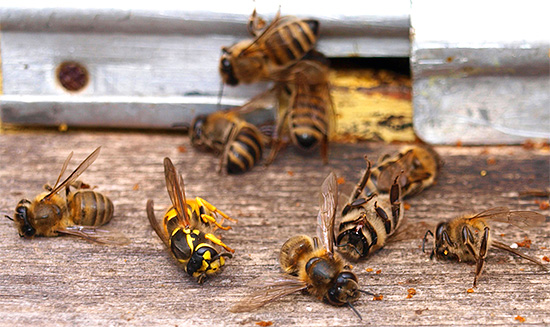
On a note
A detachment of 20-30 giant hornets destroys a bee family of 30,000 individuals in about 2 hours.
In all such cases, in order to remove the wasps from the house or from the site, the following methods are used:
- nest destruction is the fastest, most reliable, but also quite dangerous method of getting rid of an unwanted neighborhood;
- catching wasps using traps, both homemade and purchased, is a longer method, but also very effective (especially with a large number of traps), while being safe and not requiring serious labor costs;
- gradual destruction of wasps with poisoned baits.
In order to quickly remove the wasps from the house or from any other suburban building, it is most rational to try to destroy the nest of insects. If the wasps have settled, for example, in an attic that is not visited by people, and at the same time there is no desire to approach the nest directly, then traps and poison can be used to remove insects.
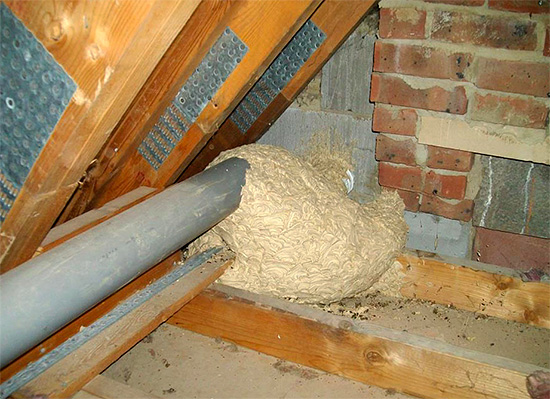
If the nest is not located on the site, and insects fly here only in search of food, then it is most reasonable to bring them out with traps or poisoned baits.
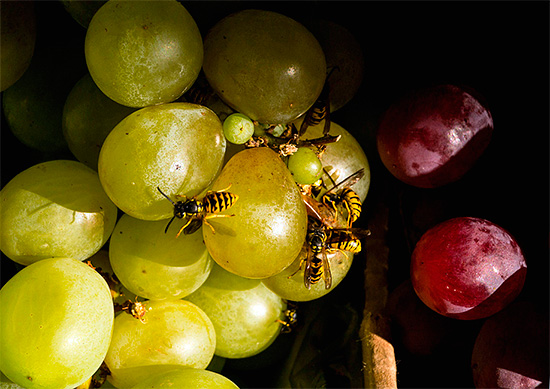
Let's take a closer look at all these methods ...
We take wasps out of the house: we destroy the nest correctly and safely
In order to get the wasps out of the house, you first need to find the place where they placed their nest.In many cases, their dwelling is located in rather inaccessible places where it cannot simply be removed or burned.
For example, wasps can settle in holes under the slate, between the siding and the wall, under the visor of the house. However, even with such an inconvenient (for us) location, it is quite possible to destroy the nest if you approach it correctly.

But let's start with simple cases...
If the rounded nest hangs under the ceiling, cornice, just on the wall and is mounted on a small leg, then the easiest way to get close to it is at night, when all the wasps are inside and are inactive: you need to quickly “pull” a tight plastic bag onto the nest, tear off the leg paper ball from the attachment point and tighten the neck of the bag. Before this, it is useful to pour any insect repellent into the bag so that all the wasps in it die within a few hours.

On a note
Effective insecticidal preparations that allow you to remove wasps in this way are, for example, modern Lambda-Zone, Get, Delta-Zone, as well as Karbofos, which is somewhat outdated today, which, however, also works quite well.
In more difficult situations, the nest cannot simply be torn off from the place of attachment. See an example in the photo:

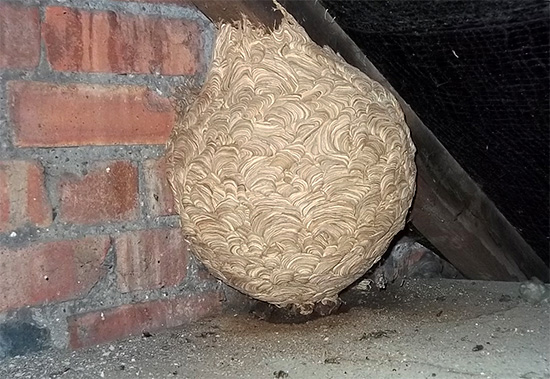
In these cases, a bag with a pre-poured insecticidal agent is also pulled over the nest, but its neck is not pulled together, but is glued to the surface with tape. Within a few days, all the wasps in the bag will die, and it can be thrown out along with the nest.
As you understand, this option will require more agility from you.And it’s far from a fact that the adhesive tape can be securely glued to a dusty, uneven surface, so think over your escape routes in advance.
Review
“How we tried to breed wasps on the site is a whole epic. They wound up under the roof of the toilet, and when the husband tried to remove one of the metal tile shields, they immediately flew out in a swarm to bite him. We bought a remedy called Get, they use it for cockroaches. They made an emulsion, the husband processed the entire roof at night. They waited for three days, it was clear that there were fewer wasps, but there was a problem, since it rained every two days. We thought that a bottle of the product would not even be enough for us for a week and started making baits. They just took spoiled plums, crushed them, put them in halves of plastic bottles and watered them with the same Geta. Wasps flocked to them just like that.
Five of these bottles were hung under the roof, and so that when it rains, water does not flow into them. A week later, not a single wasp was visible on the site at all! The happy husband climbed there again to remove the tiles and throw out the nest, and from there again a whole swarm! He fell down the stairs and broke his rib. While I was in the hospital, I called the firemen, paid them 1,500 rubles, and they did everything themselves, they removed the roof, took out the nest. And baits need to be poisoned for at least a month.
Lidia Alexandrovna, Astrakhan

Sometimes even more difficult is the situation when the nest is located, for example, behind the cladding of the house or under the slate, as a result of which it cannot be accessed. In this case, it is best to use any aerosol insecticidal agent (Combat, Reid, Dichlorvos Eco, etc.). If for some reason this did not help, then you can consider another effective, but longer way to remove wasps.
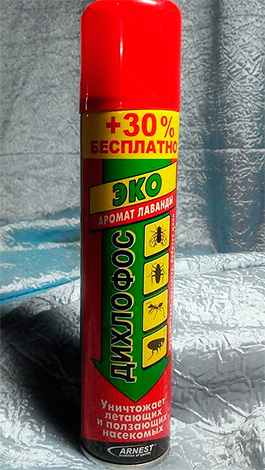
So, if the aerosol did not work, then you can spray the entrance to the insect shelter with contact insecticides (the same Get, Delta Zone or Lambda Zone). The concentration should be used increased. And then - with regularity every two or three days it is necessary to renew the layer of the drug. All wasps that crawl along the treated surface will die within a few hours.
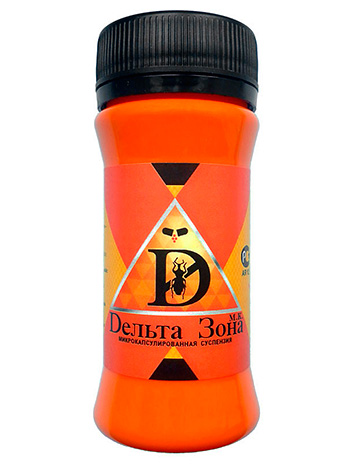
Important!
When removing wasps on your own, all operations must be carried out in tight clothes with long sleeves, gloves and a beekeeper's mask.
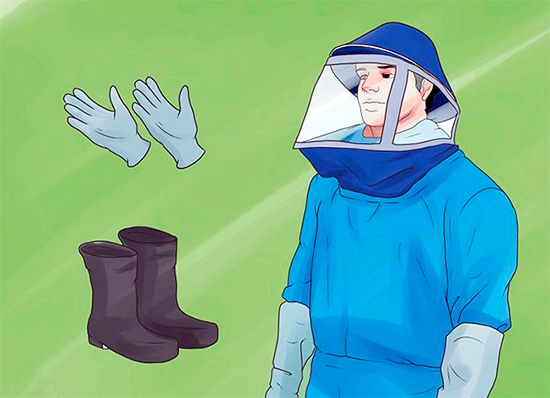
In the most extreme case, when you can’t get close to the nest at all, you can call firefighters or a pest control service. They will destroy the nest within half an hour for quite reasonable money and generally without the participation of the residents of the house.
However, this is an extreme case, since it is possible to breed wasps without access to their nest (see below about traps and poisoned baits).
Destruction of the nest of wasps on the site
At a distance from living quarters, the nest of wasps is sometimes destroyed in the following ways:
- They burn it, dousing it with gasoline first. This procedure can be carried out if the nest is located on a brick building, in an earthen hole, between stones or building blocks. In no case should a nest be set on fire if it is located on a tree or on a wooden building.
- When the nest is located in the hollow of a tree, an insecticide solution is simply poured inside, and the entrance to the hollow is plugged with a cloth moistened with the same composition.
- The nest of the so-called earth wasps can be filled with water (sometimes boiling water is used, and so that the insects do not get out, they simply cover the entrance to the hole with a stone). Earth wasps are ordinary paper wasps that simply make their home in the ground.
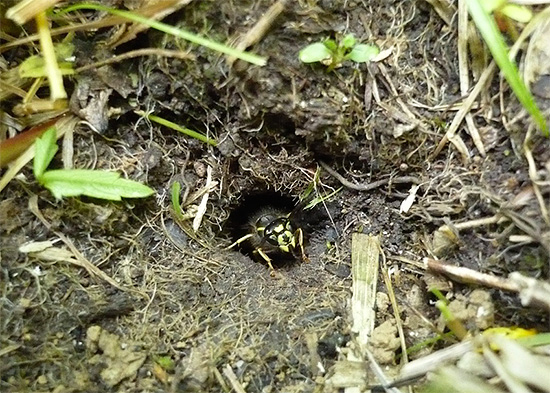
As in the house, it is advisable to carry out all procedures for destroying the nest on the site at night and in tight clothing that completely covers the body. These simple rules will help not only to destroy all the wasps at once (after all, at night they are inside their home), but also protect themselves from insect bites in case of failure.
On a note
To find a wasp nest in the area, you should put fresh fish or a piece of meat in an open area, wait for the insects to find food, and watch where they fly with pieces of prey. Adult wasps do not eat meat, but feed it to their larvae. Therefore, with such prey, insects will fly straight to the nest.
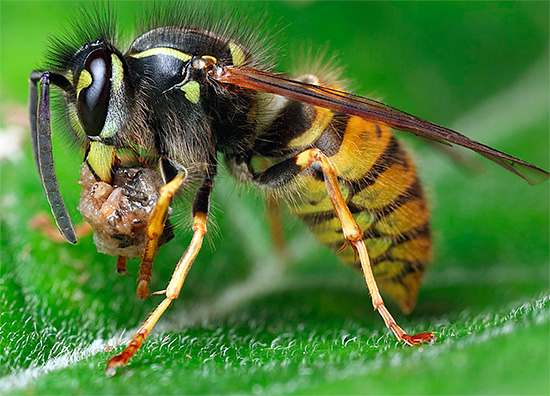
We catch wasps with traps
In spring or at the very beginning of summer, when there are still not many insects in the nest, traps can become the main means of removing wasps (both from the house and on the site as a whole) - often additional poisonous preparations may not even be needed.
At the height of the season, the traps will do an excellent job with "vagrant" wasps that fly to the site for food, as well as with those insects that have arranged their dwelling directly in the garden or vegetable garden.
A very effective wasp trap can be made with your own hands from a simple plastic bottle. To do this, the cap is twisted from it, the upper third is cut off, which is then turned upside down and inserted into the bottom of the bottle. Approximately in the middle of the resulting structure, small holes can be made for a rope or wire handle, on which the trap will then hang.
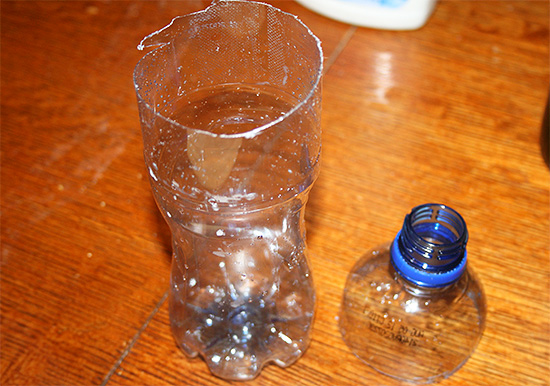
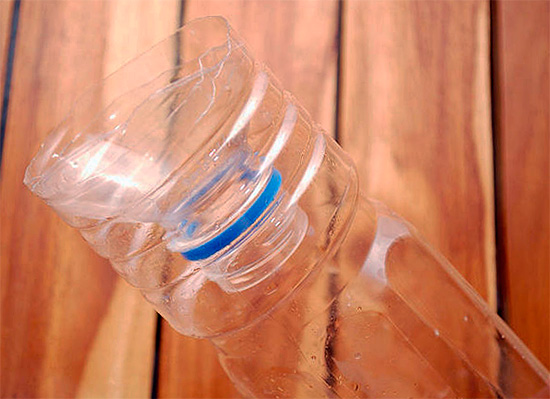
As a bait, sour jam diluted with water, beer or kvass with sugar is poured into the bottle, you can also put fermented sweet fruits (for example, rotten peaches or plums). It should be borne in mind that it is the fermented bait that will not attract bees, which, of course, should not be destroyed.
A trap is set up where the wasps fly most often.
On a note
Some summer residents sometimes add boric acid, borax, or odorless insecticidal preparations (Lambda Zone is quite suitable) to the bait in traps - these funds guarantee that in a few hours all the wasps in the trap will die, like those single individuals, who can get out of the bottles. And shaking out a trap with a hundred dead insects is much safer than if they were alive.
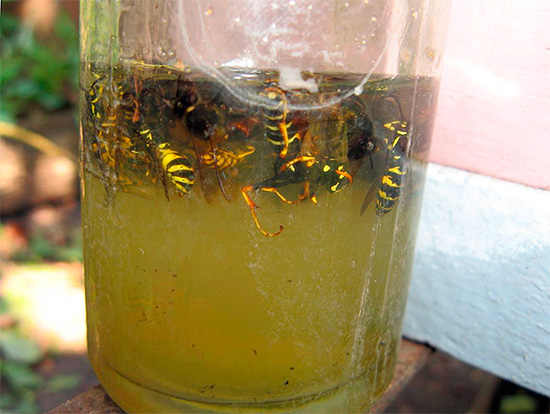
If there are a lot of wasps on the site, several traps should be placed - up to one for every 20-30 square meters.
As the traps fill with insects, they are cleaned and refilled with fresh bait.
With the help of these simple devices, wasps can be removed both from the house and from any non-residential buildings. If the location of the nest of insects is known, then it is advisable to place the traps not far from it - this will allow you to bring out the wasps at an accelerated pace.
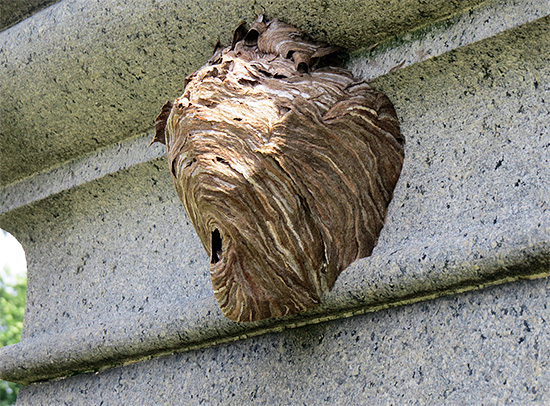
If for some reason you can’t make a trap out of a plastic bottle on your own, then you can buy it in a store - purchased wasp traps of this type work on the same principle.
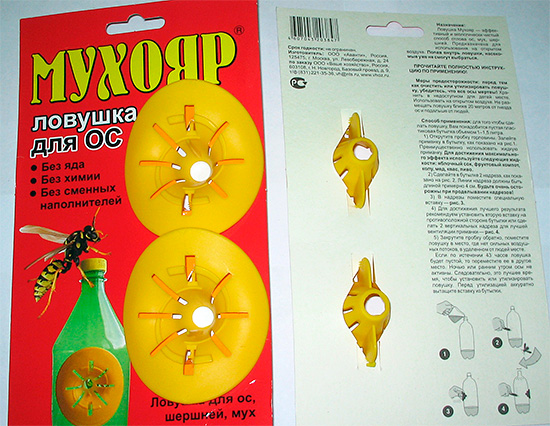

On a note
Generally speaking, you can also get wasps out of the house or from the site with the help of so-called glue traps. They are sold in specialized stores, but you can make them yourself.
To do this, Alt, RaTrap or any similar glue is applied in a continuous layer on a sheet of cardboard, and bait is placed in the center - a spoonful of fermented jam or a piece of rotten peach (you can also use meat or fish). Such a trap is placed in a place where wasps are most often and in the largest quantities. Insects flying onto the bait will simply stick to the glue, and will no longer be able to tear themselves away from it.
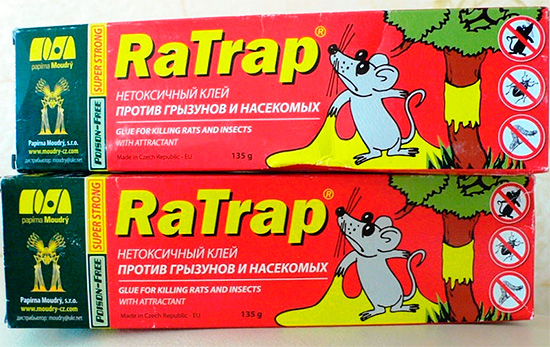
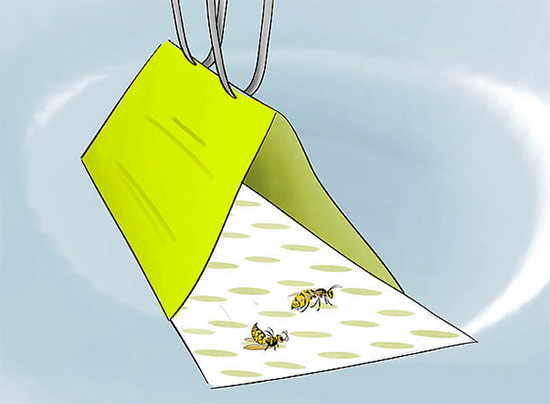
Poison bait to kill wasps
Poison baits are made from the same products that are used to attract wasps to traps. Additionally, insecticidal preparations that are odorless are added to them - boric acid or borax (medium effective), or in small quantities Lambda-Zone or Delta-Zone (highly effective insecticides lambda-cyhalothrin and deltamethrin are almost odorless). For example, for half a liter of beer or jam, 3-4 sachets of boric acid, 10 grams each or 10 ml of Lambda-Zone, are consumed.

The finished bait is poured into saucers, plastic lids or cut off bottoms of plastic bottles, and simply placed in different places in the summer cottage or in the room near the nest. Those wasps that feed on it will die within a few hours.
Important!
Do not use sugar syrup or honey as bait, as they attract bees.
And finally, we note that in your war with wasps you should not go too far. There are situations when these insects should not be destroyed. For example, if they fly into the area occasionally, in small numbers and stay mainly on flower beds and in the garden.
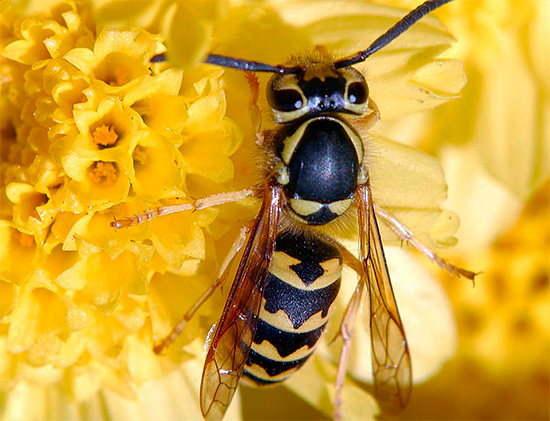
Here, wasps destroy a lot of harmful insects, and the damage to a vineyard or strawberry patch from striped raiders will be clearly insignificant (in addition, this damage can be minimized using, for example, special mesh bags).
By and large, without a clear threat from wasps to human health, it is better to live in harmony with these insects (as well as with others) than to burn them with fire, poison with poisons and pour boiling water - simply because they decided to make their home nearby From your.
Interesting video: effective improvised wasp traps

